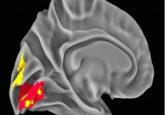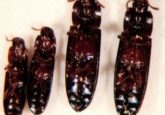What are the genetic consequences of the slave trade?

Analysis of genetic data from 23andMe has shed light on the genetic history of slavery.
While millions of people were transported to North, Central and South America and the Caribbean during the transatlantic slave trade and (uncomprehensive) written records exist, the current genetic picture of African ancestry in the New World has remained hidden, until now.
In new research, a team from 23andMe (CA, USA) and the University of Leicester (UK) has compiled genotype data from 50,281 consenting participants from both sides of the Atlantic, comparing them with historical records. The research reveals that the mistreatment of slaves has had a huge impact on the genetic landscape in the Americas.
Historical records suggest that most Americans of African descent would have roots in Angola and the Democratic Republic of the Congo – the genetic data supports this. Some discordance between current genetic data and historical shipping records can be explained by intra-continental trade – for example, the over-representation of Nigerian ancestry.
“By examining the Intra-American Slave Trade database, we concluded that much of the inferred Nigerian ancestry in the United States derives from the transport of slaves within the Americas, primarily from the Caribbean,” explained Joanna Mountain, senior author.
 Will the COVID-19 pandemic help end systemic racism?
Will the COVID-19 pandemic help end systemic racism?
Dr Fola May has focused her career on health inequity research. Now, the coinciding COVID-19 pandemic and Black Lives Matter protests have highlighted pre-existing racial disparities and thrown her research into the spotlight.
The genetic analysis threw up some surprises, however – the genetic contribution of Senegambians, for example, was lower than expected. The researchers speculated this could be due to their common presence on rice plantations. “These plantations were often rampant with malaria and had high mortality rates, which may have led to the reduced genetic representation of Senegambia in African Americans today,” noted first author Steven Micheletti.
The researchers also discovered that the proportion of people with >5% African ancestry is five-times lower in Latin America than the USA – a surprise given that Latin America received approximately 70% of all disembarked African slaves. The team postulated this could be due to the practice of “dilution” in Latin America. “In the early 1900s, sources state that the Brazilian government implemented immigration laws seeking to bring more Europeans into the country, presumably to have children with darker-skinned females and reduce African ancestry,” Micheletti explained. This practice also explains why, in Latin America, the researchers found African women to have contributed substantially more to the gene pool than African men.
In the USA, the researchers attributed the female gene bias to sexual exploitation. “The female bias is particularly shocking given that the majority of enslaved individuals were male,” commented Mountain.
While highlighting a lot of negatives, the team hopes the study will have some positives – helping those of African descent to find their roots and aiding understanding. “This paper conveys how the racist and dehumanizing acts endemic to the slave trade led to different patterns of African ancestry across the Americas that we can see in the DNA of people living today. We hope readers grasp not only the impact of the slave trade but also the deep contributions enslaved Africans made to the history, economy, and culture of the Americas,” concluded Micheletti.





